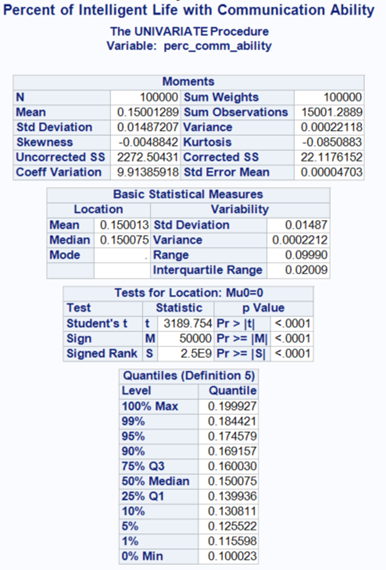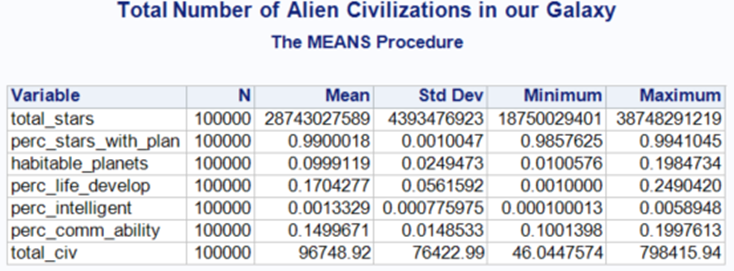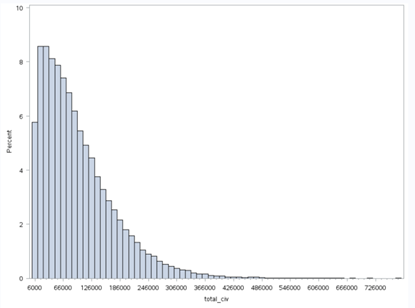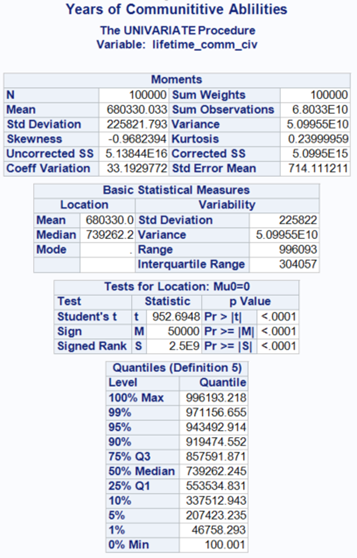
Estimating Alien Civilizations (Part 3 of the Drake Equation Series)
Welcome back! In Part 1, we began by estimating how many stars in our galaxy could have planets. In Part 2, we narrowed it down further to estimate how many planets could support life and how many of those might evolve intelligent civilizations. Now, in Part 3, we’ll take these estimates one step further, estimating how many intelligent civilizations have developed communication technology.
But here’s the big question: How many of those civilizations might be communicating with us right now?
A Quick Recap of the Drake Equation
Before we dive in, let’s quickly review the steps of the Drake Equation we’ve covered so far:
Drake Equation:

- R = How many stars are in the galaxy?
- f_p = How many of those stars have planets?
- n_e = How many planets are in the habitable zone?
- f_l = How many of those planets develop life?
- f_i = How many planets with life evolve intelligent civilizations?
Now, we’re focusing on Step 6: How many civilizations develop technology that could communicate across interstellar distances?

Step 6: Fraction of Civilizations that Develop Communication Technology (f_c)
We’ve established that intelligent life may exist, but here’s the kicker — just because a civilization is smart doesn’t mean they have the technology (or the desire) to communicate across space. In fact, many advanced civilizations could be using technologies that are completely undetectable to us.
For our purposes, we’re defining communication ability as the development of technology that allows civilizations to send signals detectable by our current instruments — things like radio waves or lasers. Sure, some civilizations might use more exotic methods (gravity waves, quantum entanglement, etc.), but for now, we’re sticking to what we can realistically detect.
Why We Chose This Range
We estimate that between 10% to 20% of intelligent civilizations develop communication technology, with an average of 15%. The reasoning? Developing communication technology involves several “hard steps,” and not every civilization will take the same path. Let’s break it down:
- Surviving Extinction-Level Events: Just like Earth has experienced mass extinctions, other civilizations may face natural disasters or wars. A civilization can’t communicate if it doesn’t survive.
- Developing Technology: Even if a civilization becomes intelligent, there’s no guarantee they’ll prioritize communication tech. They might stay local or even evolve beyond detectable technology.
- Communicating in a Detectable Form: Even if they develop technology, they have to communicate in ways we can detect — like radio waves. If they use more advanced forms, we wouldn’t be able to hear them.
Let’s see how this plays out in the simulation. First, we’ll run some SAS code to generate 100,000 values based on the distribution we’ve chosen for this step.
Code for Step 6: Calculating the Fraction of Civilizations with Communication Technology
/*Percent of Intelligent Life with Communication Ability*/
data perc_comm_ability(keep=perc_comm_ability);
do i = 1 to 100000;
do while (1);
perc_comm_ability = rand("normal", 0.15, 0.015);
/* Check if the value is within the desired range */
if perc_comm_ability >= 0.1 and perc_comm_ability <= 0.2 then leave;
end;
output;
end;
drop i;
format perc_comm_ability percent7.4;
run;


Output and Explanation for Step 6: Communication-Developing Civilizations
After running the simulation, we established that the average percentage of civilizations that develop communication technology is around 15%, with values ranging from 10% to 20%.
Breaking Down the Results
- 1 in 6 civilizations: Roughly 1 out of every 6 intelligent civilizations reaches the point where they develop the technology to communicate across space.
- Distribution: The results mostly cluster around 15%, with some variation between 10% and 20%. This gives us a solid foundation for moving forward to calculate the total number of communicative civilizations.
Why These Results Matter
This step in the Drake Equation is critical. Without the ability to communicate, even if intelligent civilizations exist, we’d never know. The results show that while not every intelligent civilization develops communication technology, a decent fraction likely does. This boosts our chances of making contact.
Taking a Slight Detour from the Traditional Drake Equation
At this point, we’re going to take a small divergence from the traditional Drake Equation before moving forward to calculate the total number of civilizations. Instead of directly incorporating the length of time that civilizations stay communicative (L) into the equation at this step, we’re first going to calculate a raw estimate for the total number of civilizations that ever developed communication abilities.
Why This Divergence?
The reason for this slight adjustment is that we want to separate two important concepts:
- The Total Number of Civilizations That Ever Existed: This gives us a raw number of civilizations in the galaxy that reached the point of developing communication abilities. This estimate doesn’t yet account for the fact that civilizations may rise and fall over time.
- The Overlap of Their Lifespan with Ours: This is where the concept of communicative lifespan comes in. After estimating the raw number of civilizations, we will later adjust that estimate to figure out how many of these civilizations might be active and communicative at the same time as our own.
By taking this detour, we get a clearer picture of the total potential for communicative civilizations and then zoom in on how many might overlap with our present era. This approach allows us to get a comprehensive understanding of the total number of civilizations that ever existed before accounting for the communication lifetimes.
Now, with that explanation in place, let’s move on to the next calculation: multiplying the distributions together to estimate how many civilizations have developed communication abilities across the history of the Milky Way.
Multiplying the Distributions Together
Now that we’ve calculated the fraction of intelligent civilizations that develop communication technology, it’s time to multiply all the distributions together. This will give us an estimate for the total number of alien civilizations that ever developed communication technology in the Milky Way.
This step involves multiplying the results from each part of the Drake Equation so far:
- Total number of stars
- Fraction of stars with planets
- Fraction of planets in the habitable zone
- Fraction of planets where life develops
- Fraction of planets where intelligent life emerges
- Fraction of intelligent civilizations that develop communication technology



Output and Explanation for the Total Number of Communicative Civilizations
After running the final calculation, we estimate that there are 96,828 alien civilizations that have developed communication technology throughout the history of the Milky Way.
What Do These Results Mean?
- A Vast Number: The total number of 96,828 civilizations is incredibly large, but it includes all civilizations that have ever existed and developed communication technology. This number covers billions of years of galactic history.
- Galactic Potential: While the sheer size of this number is impressive, the real question is how many of these civilizations are broadcasting signals right now.
Step 7: How Long Do Civilizations Stay in the “Communication Phase”? (L)
We’ve estimated how many civilizations could develop communication abilities, but now we ask: how long do they stay in this phase? Civilizations might rise and fall, and their ability to send detectable signals could be brief. For instance, humanity has only been sending signals into space for about 100 years, and it’s uncertain how long we’ll continue. Natural disasters, resource depletion, or even self-destruction could end any civilization’s communicative phase.
Why We Diverge from the Traditional Drake Equation
In the original Drake Equation, the lifespan of civilizations is calculated early on. However, in our approach, we first calculate the raw estimate of all civilizations that have developed communication abilities. Then, we bring in the concept of their lifespan to see how many might overlap with our own civilization. This helps us focus on the civilizations that are still active right now.
Galactic Communication Lifespan
The length of time a civilization remains communicative depends on several factors:
- Surviving extinction-level events: Natural or self-induced disasters like asteroid impacts or nuclear wars can easily cut short a civilization’s ability to communicate.
- Technological development: A civilization must develop the means to transmit signals across space, which could take thousands of years.
- Maintaining communication: Even if they develop communication technologies, civilizations might abandon them or switch to undetectable methods as they evolve.
Humanity’s Communicative Age: A Tiny Window
For perspective, while Homo sapiens have existed for 200,000 years, we’ve only been capable of sending signals for just over 100 years. That’s a minuscule fraction of our existence. More intentional attempts to communicate, like the Arecibo message in 1974, only began 50 years ago. This suggests the communicative phase for any civilization could be very short.
Modeling Civilization Lifespan
In our analysis, the L factor represents the length of time a civilization remains communicative, sending out signals that could be detected by others. We modeled this with a distribution designed to ramp up quickly from short-lived civilizations (e.g., a few hundred or thousand years) to longer-lasting ones.
Why We Chose This Range
We intentionally set L to start low — around 100 years — but ramp up after that. The reasoning is simple: if a civilization can survive the first 100 to 500 years of its technological development, it’s more likely to last much longer, potentially even thousands of years.
Running the Simulation
With these assumptions, we run the simulation to estimate how long civilizations remain communicative, accounting for both short-lived and long-lasting civilizations.
/*Years of Communicative Abilities*/
data lifetime_comm_civ(keep=lifetime_comm_civ);
skewness = -6; /* Control the left skewness */
sigma = (log((1 + (skewness ** 2)) ** 0.5)) / skewness; /* Calculate sigma for Lognormal distribution */
/* Generate random values from a left-skewed Lognormal distribution */
do i = 1 to 100000;
u = rand("uniform"); /* Uniform random variable */
lifetime_comm_civ = 100 + (1000000 - 100) * exp(sigma * rand("lognormal", 0, 1));
output;
end;
run;


Output and Explanation for Step 7: Civilization Lifespan
After running our simulation for the L factor (the length of time civilizations remain communicative), the results show a diverse range of lifespans. Let’s break down the key points:
Key Statistics
- Mean lifespan: 680,330 years.
- Median lifespan: 739,262 years.
- Range: From a minimum of 100 years to a maximum of 996,193 years.
Distribution Insights
- Average and Median: The average lifespan of a communicative civilization is 680,330 years, but notice that the median is a bit higher, at 739,262 years. This indicates that while some civilizations do last shorter periods, the distribution tends to favor civilizations that last quite long — hundreds of thousands of years.
- Min and Max: The minimum lifespan, at 100 years, represents civilizations that quickly exit the communicative phase. The 1% quantile (46,758 years) shows that even the civilizations in the bottom tier last a significant amount of time on cosmic scales. At the upper end, a small number of civilizations could persist for almost 1 million years.
- Skewness and Ramp Up: As intended, the distribution is left-skewed, meaning most civilizations reach the 10,000-year mark quickly and then extend much further into long timeframes. This is particularly evident in the sharp increase between the 1% quantile (46,758 years) and the median (739,262 years).
What Does This Mean?
The distribution suggests that, once civilizations make it past early hurdles (e.g., 10,000–50,000 years), many of them survive for extended periods, increasing the likelihood of sustained communication. The fact that the average civilization could last over 600,000 years is good news for our search — if civilizations manage to survive past their infancy, there’s a strong chance they will remain communicative for a substantial amount of time, making it more likely that their signals overlap with our own civilization’s brief window of communication.
Transitioning from Communication Lifespan to Current Alien Civilizations
Now that we’ve estimated the lifespan of civilizations in their communicative phase, the next key question is: how many of those civilizations exist right now? This is where our divergence from the traditional Drake Equation comes into play. Rather than just asking how many civilizations have ever existed, we need to factor in the overlap between their communicative phase and our own. After all, it’s only civilizations that are sending out signals during our brief window of existence that we have any chance of detecting.
With the lifespan of civilizations ranging from just a few hundred to potentially millions of years, we have to account for the possibility that many civilizations may have risen and fallen long before we came along — or might emerge long after we’re gone.
Why Timing Matters: Galactic Timeframes The universe has been around for about 14 billion years, and the Milky Way galaxy alone is about 13.6 billion years old. Civilizations could have emerged billions of years ago and already vanished. This is why time overlap is so crucial. Even if a planet developed intelligent life, that civilization could have flourished and disappeared without ever intersecting with our own existence.
So, how do we calculate the odds of civilizations existing at the same time as us?
We estimate the age of our own civilization as around 10,000 years. That’s 5,000 years older than the Sumerians, and it assumes that our civilization and our technological advancement continues long into the future without interruptions like self-destruction or environmental collapse.
To find the civilizations that are overlapping with us, we take the total number of communicative civilizations and calculate the proportion that exists during our specific timeframe.
Code to Calculate the Probability of Overlapping Civilizations
Using the lifespan estimates of civilizations in their communicative phase, we multiply the time overlap by the total number of potential civilizations. This calculation helps us figure out how many alien civilizations might be communicative at the same time as our own.
/* Define the timeframe of our civilization */
%let civilization_timeframe = 10000; /* in years */
/* Calculate the estimated number of alien civilizations that exist at the same time */
data time;
set drake;
civilizations_same_time = min(&civilization_timeframe, lifetime_comm_civ) * total_civ / lifetime_comm_civ;
run;
/*Taking the min value in the numerator ensures that we consider only the overlapping period between
our civilization and the alien civilizations*/
What’s Happening Here?
Defining our civilization’s timeframe:
- In this code, we’re setting the duration of our civilization’s “communicative phase” to 10,000 years. This represents the estimated length of time that human civilization might be capable of sending and receiving signals across space. We assume that humanity is 5,000 years older than the Sumerians, and this figure includes our own technology lifespan.
Calculating the overlapping civilizations:
- total_civ represents the total number of civilizations estimated to exist in the galaxy (the number we calculated by multiplying all the terms of the Drake Equation).
- lifetime_comm_civ is the lifespan of a civilization’s communicative phase.
We use the min() function to find the shorter of two values.
- Our civilization’s communicative phase (civilization_timeframe), or
- The alien civilization’s communicative phase (lifetime_comm_civ).
This ensures that we’re only considering civilizations whose communicative lifespan overlaps with ours.
- Why divide by lifetime_comm_civ? Dividing by the communicative lifespan helps standardize the result, ensuring that we only count civilizations that have communication windows overlapping with our own.
The Importance of Overlap
Civilizations can rise and fall over the galaxy’s 14-billion-year history. Even if 96,000 civilizations exist, many might have been active millions of years ago and are no longer broadcasting signals. We only care about civilizations that exist at the same time as us. The code ensures that we estimate this overlap accurately by focusing on how long both civilizations remain capable of communicating. Only overlapping lifespans count toward the final number of communicative civilizations.
The Moment We’ve Been Building Toward: How Many Civilizations Are Out There Right Now?
After running the simulations, considering the number of stars, habitable planets, life-bearing planets, and the development of intelligent civilizations with the ability to communicate, we’ve arrived at a pivotal question: how many of these civilizations are out there right now, at this very moment?
Drumroll, please…

Based on our calculations, we estimate that, on average, there are 2,363 civilizations currently existing in our galaxy with the ability to communicate. That’s right — 2,363 civilizations, each potentially broadcasting their presence across the cosmos, right at this moment!
To put it in perspective: this isn’t just a number. This represents thousands of intelligent civilizations that could be spread across the Milky Way, possibly wondering about us, just as we are about them. The thought that there might be thousands of civilizations, some perhaps far more advanced than us, waiting to be discovered is both mind-boggling and thrilling.
But before we get ahead of ourselves, there’s still one big question left to answer…
How Close Are They?
Having an estimated number of communicative civilizations is only half the battle. The next challenge is determining where they are. Could the closest alien civilization be within our technological reach? Or are they so far away that even if they’re transmitting signals, we might never know? In the next part, we’ll dive into the incredible distances between these civilizations and calculate just how far we’d have to go to find our cosmic neighbors.
Stay tuned for Part 4 as we explore the galactic distances that separate us from potentially life-changing contact!
Next in the series: Galactic Distances: How Far Away Are Alien Civilizations? (Part 4 of the Drake Equation Series). Or, if you missed the previous part, go back here.
Unless otherwise noted, all images are by the author
Communicating with the Cosmos was originally published in Towards Data Science on Medium, where people are continuing the conversation by highlighting and responding to this story.
Originally appeared here:
Communicating with the Cosmos
